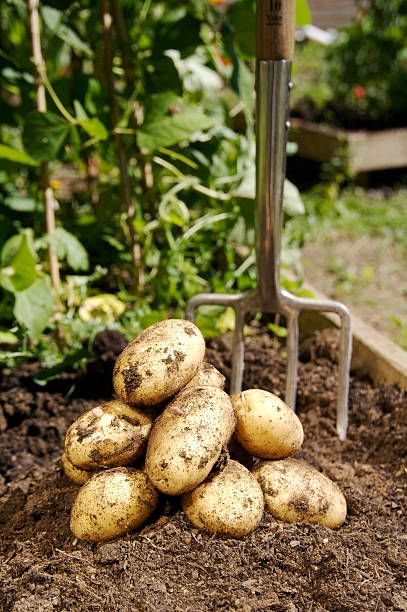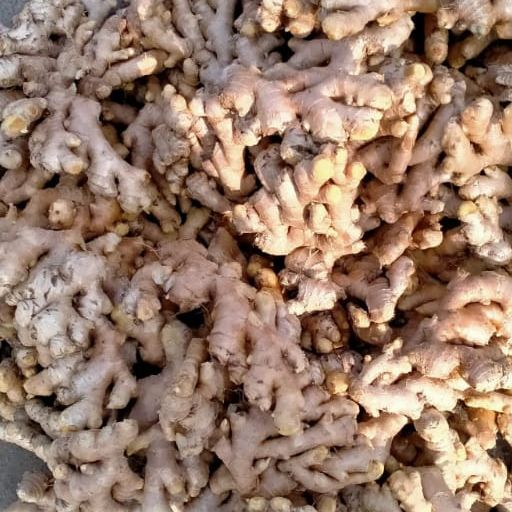Potato Pesticides in Smart Agriculture: Enhancing Sustainable Pest Management for Optimal Yields
Potato Pesticides cultivation is a vital agricultural activity that sustains food security globally. However, the challenge of pests and diseases has always posed a significant threat to crop yield and quality. The traditional use of pesticides, while effective, raises concerns over environmental impact, human health, and sustainability. With the advent of Smart Agriculture, there is now an opportunity to revolutionize the way potato farming is approached, integrating precision technology and innovative practices to optimize pesticide use and enhance crop protection.
1. The Role of Pesticides in Potato Cultivation
Pesticides play an essential role in safeguarding potato crops from pests and diseases. From combating the notorious Colorado potato beetle to controlling late blight, pesticides are crucial for maintaining high-quality yields. However, their application must be carefully managed to avoid resistance buildup, environmental contamination, and human health risks.
Contents
- 0.0.1 2. Challenges of Traditional Pesticide Use
- 0.0.2 3. Smart Agriculture: A Paradigm Shift in Pest Management
- 0.0.3 4. Integrated Pest Management (IPM): The Core of Smart Agriculture
- 0.0.4 5. Precision Application of Pesticides
- 0.0.5 6. Data-Driven Decision Making
- 0.0.6 7. The Economic and Environmental Benefits of Smart Pesticide Management
- 0.1 Benefits:
- 0.2 Objectives:
- 0.3 Explanation:
- 0.4 Usefulness:
- 0.5 Advantages:
- 1 Challenges and Considerations in Implementing Smart Agriculture for Potato Pesticides Management
2. Challenges of Traditional Pesticide Use
The conventional approach to pesticide application in potato farming comes with several challenges:
- Overuse of Chemicals: Repeated application of the same pesticide can lead to resistance in pests.
- Environmental Impact: Pesticide runoff can contaminate water sources and harm non-target organisms.
- Health Risks: Exposure to chemical residues can pose risks to farmworkers and consumers.
- Cost Inefficiency: Over-reliance on pesticides can be economically burdensome for farmers.
3. Smart Agriculture: A Paradigm Shift in Pest Management
Smart Agriculture leverages technology to enhance farming practices, making them more efficient, sustainable, and profitable. Key components include:
- Precision Agriculture: The use of GPS, sensors, and drones to monitor crop health and apply pesticides with pinpoint accuracy.
- Big Data Analytics: Collecting and analyzing data from various sources to make informed decisions on pesticide application.
- IoT-Enabled Monitoring Systems: Real-time tracking of pest populations and environmental conditions to optimize pesticide use.
4. Integrated Pest Management (IPM): The Core of Smart Agriculture
IPM is a holistic approach that combines biological, cultural, mechanical, and chemical methods to manage pests in a sustainable way. In the context of Smart Agriculture, IPM becomes even more powerful:
- Biological Control: Utilizing natural predators and biopesticides to reduce pest populations.
- Cultural Practices: Crop rotation, intercropping, and soil management to create unfavorable conditions for pests.
- Mechanical Control: Using traps, barriers, and physical removal of pests.
- Chemical Control: Applying pesticides as a last resort, in the most effective and environmentally friendly manner.
5. Precision Application of Pesticides
One of the significant benefits of Smart Agriculture is the precision application of pesticides. Technologies such as variable-rate technology (VRT) and drones enable targeted pesticide application, reducing waste and minimizing environmental impact:
- VRT: Adjusts the amount of pesticide applied based on real-time data, ensuring that only affected areas are treated.
- Drones: Equipped with multispectral cameras, drones can identify pest-infested areas and deliver pesticides accurately, reducing exposure to non-target areas.
6. Data-Driven Decision Making
The integration of big data and analytics in Smart Agriculture allows farmers to make data-driven decisions:
- Predictive Analytics: Forecasting pest outbreaks based on historical data and weather patterns.
- Real-Time Monitoring: Using IoT sensors to continuously monitor crop health and pest activity, enabling timely interventions.
- Decision Support Systems (DSS): Providing farmers with actionable insights on the optimal timing and dosage of pesticide applications.
7. The Economic and Environmental Benefits of Smart Pesticide Management
Adopting Smart Agriculture practices for pesticide management offers numerous benefits:
- Cost Savings: Potato Pesticides,Reduced pesticide usage leads to lower input costs and higher profit margins.
- Improved Crop Yield: Precise pest control enhances crop health and yield.
- Sustainability: Minimizing chemical use reduces environmental impact, supporting long-term agricultural sustainability.
- Compliance with Regulations: Meeting stringent regulations on pesticide use becomes easier with accurate data and controlled application.

Benefits:
- Enhanced Efficiency: Potato Pesticides Smart Agriculture reduces the overuse of pesticides by applying them precisely where needed, minimizing waste and ensuring more effective pest control.
- Environmental Protection: Potato Pesticides By using technology to monitor and manage pesticide application, Smart Agriculture mitigates the environmental risks associated with traditional pesticide use, such as water contamination and harm to non-target species.
- Economic Advantages: Potato Pesticides,Optimizing pesticide use not only reduces costs but also increases yield, leading to greater profitability for farmers. This is particularly beneficial in the context of small-scale farming where resources are limited.
- Compliance with Regulations: The agricultural sector faces increasing pressure to comply with environmental regulations and reduce the ecological footprint of farming practices. Smart Agriculture provides the tools and data needed to meet these requirements.
- Improved Crop Health: The integration of various pest management strategies ensures that potato crops are healthier and more resistant to diseases, leading to higher quality produce.
- Sustainability: The sustainable use of pesticides through Smart Agriculture ensures the long-term viability of farming practices, supporting food security and environmental health.
Objectives:
- To Minimize Environmental Impact: Reduce the environmental footprint of potato farming by adopting precision agriculture techniques that optimize pesticide use.
- To Improve Crop Yield and Quality: Enhance the health and productivity of potato crops through integrated pest management and data-driven decision-making.
- To Reduce Economic Costs: Lower the costs associated with pesticide application by using technology to apply pesticides more efficiently and effectively.
- To Promote Sustainable Farming Practices: Encourage the adoption of sustainable farming practices that protect the environment, support biodiversity, and ensure long-term agricultural success.
Explanation:
1. How Smart Agriculture Works in Pesticide Management
Potato Pesticides Smart Agriculture incorporates a variety of technologies and methods to optimize pesticide use:
- Sensors and IoT: Devices placed in fields collect data on soil moisture, temperature, and pest activity, allowing farmers to make informed decisions about pesticide application.
- Drones and Satellites: These technologies provide aerial imagery that helps identify pest-infested areas, guiding targeted pesticide application.
- Data Analytics: By analyzing historical data and current conditions, predictive models can forecast pest outbreaks, enabling preemptive action.
- Automation and Robotics: Automated systems can apply pesticides precisely, ensuring that only the necessary areas are treated.
2. The Importance of Data in Smart Agriculture
Data is at the heart of Smart Agriculture, driving informed decision-making:
- Precision: Data allows for precise application of pesticides, reducing waste and minimizing environmental impact.
- Timing: Knowing the right time to apply pesticides can make the difference between effective pest control and crop damage.
- Resource Management: Efficient use of resources, guided by data, leads to cost savings and better crop management.
3. The Role of Farmers and Technology Integration
Potato Pesticides,Farmers play a crucial role in the successful implementation of Smart Agriculture. Their knowledge and experience, combined with technology, create a powerful tool for improving pesticide management. Training and support are essential to help farmers adapt to new technologies and make the most of Smart Agriculture.
Usefulness:
Smart Agriculture and the integrated use of technology in pesticide management offer numerous benefits:
- Precision Targeting: Reduces unnecessary pesticide use, lowering costs and environmental impact.
- Real-Time Monitoring: Potato Pesticides,Allows for quick responses to pest outbreaks, minimizing crop damage.
- Enhanced Crop Quality: Potato Pesticides,Leads to healthier plants and better yields.
- Sustainable Practices: Supports long-term sustainability in agriculture by reducing reliance on chemical inputs.
Advantages:
- Increased Efficiency: Potato Pesticides Smart Agriculture enables more efficient use of pesticides, reducing waste and increasing the effectiveness of pest control measures.
- Cost Reduction: Potato Pesticides,By optimizing pesticide use, farmers can save money on chemical inputs and reduce the labor associated with manual pesticide application.
- Environmental Stewardship: Potato Pesticides,The targeted application of pesticides minimizes the impact on the environment, protecting ecosystems and reducing the risk of contamination.
- Improved Yield and Profitability: Healthier crops and higher yields translate into greater profitability for farmers, particularly in regions where potato farming is a major economic activity.
- Compliance with Regulations: Smart Agriculture helps farmers comply with increasingly stringent environmental regulations by providing accurate data and controlled application methods.

Challenges and Considerations in Implementing Smart Agriculture for Potato Pesticides Management
Potato Pesticides,While Smart Agriculture offers numerous advantages, its implementation in pesticide management for potato farming comes with certain challenges and considerations. Understanding these is crucial for the successful adoption of these technologies.
1. Technological Barriers
Adopting Smart Agriculture requires access to advanced technologies such as sensors, drones, and data analytics platforms. However, not all farmers, especially smallholders, have the financial resources or technical know-how to invest in and maintain these systems. The initial costs of purchasing equipment and the ongoing expenses for software subscriptions and maintenance can be prohibitive.
2. Data Management and Analysis
Potato Pesticides,The vast amounts of data generated by Smart Agriculture technologies require proper management and analysis. Farmers must have access to tools that can process and interpret data, turning it into actionable insights. The complexity of data analysis can be overwhelming, particularly for those without a background in technology. Additionally, concerns about data privacy and security must be addressed to protect sensitive farm information.
3. Training and Education
Potato Pesticides,The success of Smart Agriculture depends on the farmer’s ability to effectively use the technology. This requires comprehensive training and education programs to equip farmers with the skills needed to operate and maintain the equipment, interpret data, and make informed decisions. Without adequate training, there is a risk that the technology will not be used to its full potential, leading to suboptimal results.
4. Infrastructure and Connectivity
Potato Pesticides,Smart Agriculture relies on a strong infrastructure and reliable internet connectivity to function effectively. In many rural areas where potato farming is prevalent, infrastructure may be underdeveloped, and internet access may be limited or unreliable. This can hinder the real-time monitoring and data transmission necessary for precision agriculture, leading to delays in decision-making and potential crop losses.
5. Environmental and Ethical Considerations
While Smart Agriculture aims to reduce the environmental impact of pesticide use, there are still ethical considerations related to the adoption of these technologies. For instance, the use of drones and automated systems raises questions about the impact on employment in rural communities. Additionally, the reliance on technology-driven solutions may inadvertently marginalize small-scale farmers who lack the resources to compete with larger, tech-savvy operations.
6. Integration with Existing Practices
Farmers must carefully integrate Smart Agriculture technologies with their existing farming practices. This requires a tailored approach that considers the specific needs of the farm, the type of pests being managed, and the local environmental conditions. A one-size-fits-all solution is unlikely to be effective, and farmers must be willing to adapt and experiment with different technologies to find what works best for their situation.
Potato Pesticides,The integration of Smart Agriculture in potato farming represents a significant advancement in sustainable pest management. By leveraging technology to optimize pesticide use, farmers can achieve higher yields, reduce costs, and minimize environmental impact. The future of potato farming lies in the adoption of these innovative practices, which promise to enhance both productivity and sustainability. As Smart Agriculture continues to evolve, it will play a critical role in ensuring the long-term success and viability of the agricultural sector.




